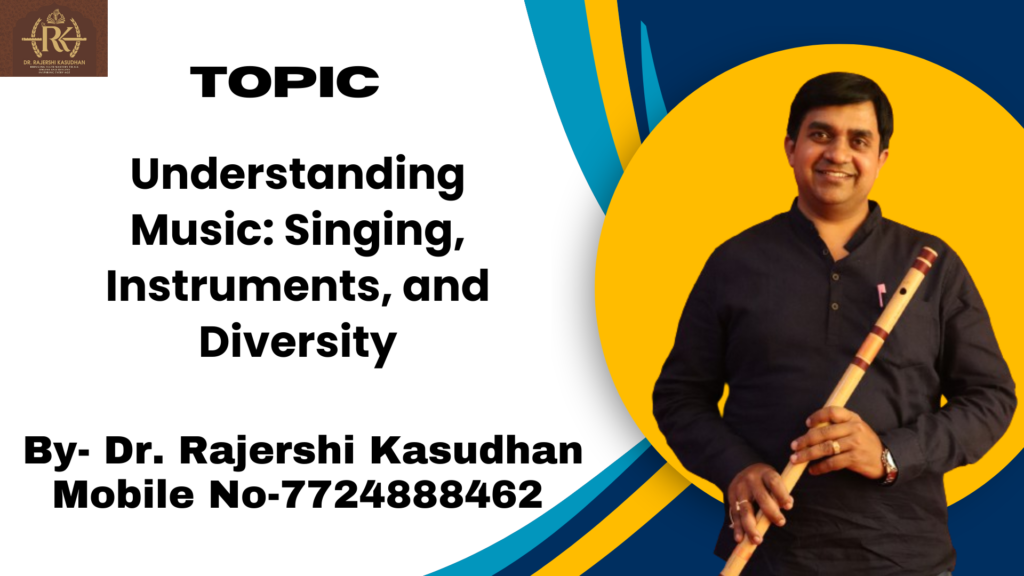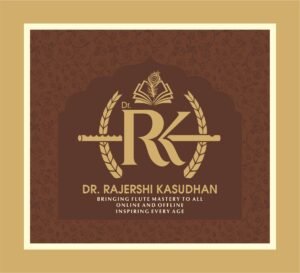1- The Role of Flute Performance in Vocal-Centric Hindustani Classical Music
In Hindustani classical music, the flute holds a revered position as both a melodic and expressive instrument. Here’s how flute performance fits into the context of the vocal-centric nature of Hindustani classical music:
- Melodic Expression: The flute is capable of producing a wide range of melodic expressions, allowing it to beautifully interpret and embellish the ragas (melodic frameworks) central to Hindustani classical music. Flute performers often draw inspiration from vocalists, employing techniques such as meend (glissando) and gamak (ornamentation) to mimic the subtleties of vocal phrasing and emotive delivery.
- Emulating Vocal Techniques: Flute players often strive to emulate the nuances and intricacies of the human voice in their performance. Through breath control, embouchure (mouth positioning), and fingering techniques, flutists can create a lyrical and expressive sound reminiscent of vocal intonation and articulation.

- Accompaniment and Solo Performance: In Hindustani classical music, the flute serves both as a solo instrument, capable of captivating audiences with its lyrical melodies, and as an accompaniment to vocalists and other musicians. In both contexts, flute performance is guided by the principles of raga, tala (rhythmic cycle), and improvisation, mirroring the improvisational techniques used by vocalists.
- Interplay with Vocalists: Flute performers often engage in musical dialogue with vocalists during performances, exchanging melodic phrases and responding to each other’s improvisations. This interplay highlights the symbiotic relationship between vocal and instrumental music in Hindustani classical tradition, where each informs and enriches the other.
Overall, flute performance in Hindustani classical music not only complements vocal music but also contributes to the rich tapestry of sounds and expressions within the tradition. It embodies the ethos of “Sangeet,” where singing, instrumental music, and dance converge to create a holistic and immersive musical experience.

2-Understanding Music: Singing, Instruments, and Diversity
2.1 Sangeet: The term ‘Sangeet’ is derived from ‘sam’ and ‘geet’, where ‘sam’ means complete or proper, and ‘geet’ means to sing. So, Sangeet refers to singing in a proper manner. However, it’s not limited to just singing; it also encompasses instrumental music and dance. Pt. Sharngadev, an esteemed authority on music, supports this notion by stating that Sangeet includes singing, playing instruments, and dancing.
2.1 Systems of Music:
There are two primary systems of music:
- Northern or Hindustani Music: This system is predominant in most parts of India except for four southern states. It’s also popular in neighboring countries like Nepal, Bangladesh, and Pakistan.
- Southern or Karnatak Music: This system is prevalent in the southern states of India, such as Kerala, Karnataka, Andhra Pradesh, and Tamil Nadu.
Despite their differences, these two systems share several commonalities:
- Both systems utilize 22 Shrutis (microtones) in an octave.
- They both incorporate 12 notes within an octave.
- Both systems employ the concept of Thata Raga (musical scale).
- In both systems, music revolves around Ragas (melodic frameworks) and Talas (rhythmic cycles).
In addition to vocal and instrumental components, the flute plays a significant role in both Hindustani and Karnatak music.

3-Understanding Nada: Melodious Sound and its Relation to Flute Performance
3.1 Definition of Nada
Nada is a pleasing sound that comes from various sources, including the mouth or other objects, and reaches our ears through the air, water, or solid materials. It occurs when objects vibrate or move back and forth. If these vibrations are regular, the resulting sound is pleasant and suitable for use in music. However, if the vibrations are irregular, the sound is unpleasant and not used in music.
The term ‘Nada’ is derived from two syllables: ‘Na’, representing life breath, and ‘Da’, representing fire. Thus, Nada originates from a combination of life breath and fire. There are two types of Nada: Ahat Nada and Anahat Nada. Ahat Nada occurs when two objects are struck together, while Anahat Nada is experienced internally without any external impact. Ahat Nada is utilized in music, whereas Anahat Nada is not.
3.1.1 Ahat Nada : Ahat Nada possesses three primary characteristics: pitch, intensity, and timbre. Pitch determines whether the sound is high or low, based on the frequency of vibrations. Intensity indicates whether the sound is loud or soft, depending on the force used to create it. Timbre refers to the distinct tonal quality produced by different objects or instruments, helping to identify their source.
In the context of flute performance, Ahat Nada gains significance as flutists produce melodious sounds through controlled breath and finger movements on the instrument. The flute’s pitch, intensity, and timbre contribute to its unique sound, enriching musical compositions and performances.
3.1.2 Anahat Nada:- Anahat Nada, which is experienced internally and associated with spiritual experiences, does not directly relate to flute performance or music in general.

